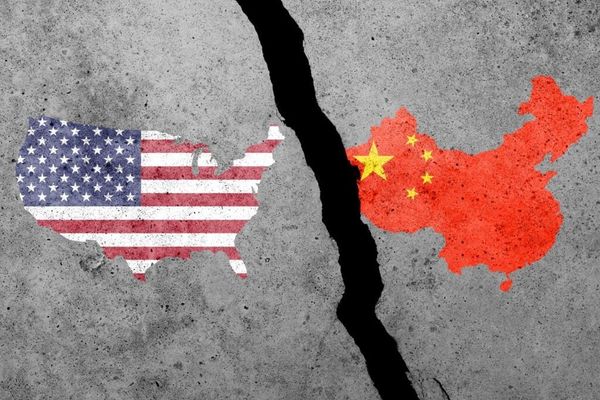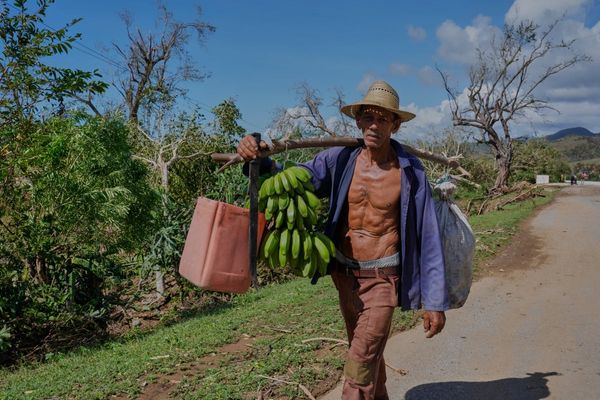
So far in 2018, a total of 24 typhoons have formed over the Asia-Pacific region. In every case, when those typhoons approached Taiwan, they either changed course or just passed by the island, never making landfall.
The pattern is repeating itself: Super Typhoon Kong-Rey, currently lurking east of Taiwan, is unlikely to impact the island directly, weeks after Typhoons Trami and Mangkhut veered towards Japan and the Philippines, respectively. In July, Typhoon Maria threatened to hit the island before weakening and charting a relatively harmless path to the north of Taiwan.
It’s almost as if Taiwan has deployed a force field around its borders, making the island impenetrable to typhoons. The only incident to occur this year when a typhoon has technically passed through Taiwan was when Typhoon Kemi was still only a tropical depression.

The Central Weather Bureau (CWB) has a database with all the typhoons that have invaded Taiwan from 1911 to 2017. The definition of an invasion is when the eye of the typhoon makes landfall over Taiwan or, for typhoons that pass offshore without making landfall, when the storm still causes disasters on land.
According to the records, an average of three typhoons are classified as invading Taiwan each year – a number which has been reached a total of 36 times. The highest amount on record is seven, which has happened four times in the past 100 years.

In addition, since the records began, there have been two separate years that Taiwan has not been affected by any typhoon whatsoever: in 1941, when there were 20 typhoons recorded, and 1964, which saw a record number of 37 typhoons. In each of those two years, no typhoons made landfall in Taiwan – in fact it seems that no typhoons even came close to the island.


So why aren’t typhoons making landfall in Taiwan? What are the reasons causing the typhoons to veer off course? First of all, we should understand the factors that affect a typhoon's trajectory.
A typhoon’s path is influenced by the atmospheric airflow. The main influencer of a typhoon's course is the Western Pacific Subtropical High (WPSH), a subtropical ridge which is a belt of atmospheric pressure over the Northern Pacific Ocean. The strength, range and position of the WPSH will change depending on the overall climate. In the summer, due to the rise in temperatures, both the strength and range will increase, with the possibility of it extending over Taiwan or even reaching the Asian continent.
As typhoons are low-pressure entities, they generally form near the southern edge of the WPSH. Due to the subtropical ridge’s airflow circulating clockwise, once a typhoon comes to life, its path will follow the southern edge westward toward Taiwan and the Philippines.

Once a typhoon nears Taiwan or the Philippines, it will either continue west or drift north, with the different paths relating to the characteristics of the WPSH at the time.
If the subtropical ridge does not extend further westward, the typhoon will swing clockwise, moving north and sometimes even northeasterly along the edge of the ridge. Under such circumstances, typhoons have a high possibility of impacting Japan.

If the western edge of the ridge extends westward over the Asian continent, then the typhoon will continue west along the southern edge of the ridge. At that moment, because Taiwan is mostly likely within the ridge, the typhoon will likely pass through the Philippines and hit Southeastern China or the Indo-China Peninsula.

If the ridge’s area of influence reaches the Asian continent, then the typhoon will carry on westward.
If, however, the western edge of the WPSH is close to Taiwan at the time, then the possibility of a typhoon invading Taiwan will increase.

If the ridge’s western edge is close to Taiwan, then the chances of a typhoon hitting increases.
Because the location and range of the subtropical ridge is constantly changing, the path of each typhoon usually varies. If we look at the typhoons that have come near Taiwan this year, some have veered north, while many others continued west without affecting Taiwan due to the air pressure above Taiwan being high at the time.
Of course, the WPSH is not the only factor that can affect a typhoon's trajectory. Other variables include the typhoon itself or the different air pressures found around East Asia. Also, when air pressures change rapidly, a typhoon will usually follow a very unique path. However, because of the variety and complexity of the factors that influence a typhoon, predicting their trajectory remains a challenging undertaking prone to failure.
Read Next: INFOGRAPHIC: Inside Taiwan's Wild Neighborhood Warden Elections
This article originally appeared on the Chinese-language Taiwan edition of The News Lens. The original can be found here.
Translator: Zeke Li
Editor: Nick Aspinwall (@Nick1Aspinwall)
If you enjoyed this article and want to receive more like it in your news feed, please be sure to like our Facebook page below.







